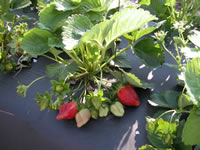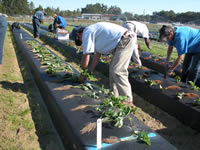Production
go.ncsu.edu/readext?183315
en Español / em Português
El inglés es el idioma de control de esta página. En la medida en que haya algún conflicto entre la traducción al inglés y la traducción, el inglés prevalece.
Al hacer clic en el enlace de traducción se activa un servicio de traducción gratuito para convertir la página al español. Al igual que con cualquier traducción por Internet, la conversión no es sensible al contexto y puede que no traduzca el texto en su significado original. NC State Extension no garantiza la exactitud del texto traducido. Por favor, tenga en cuenta que algunas aplicaciones y/o servicios pueden no funcionar como se espera cuando se traducen.
Português
Inglês é o idioma de controle desta página. Na medida que haja algum conflito entre o texto original em Inglês e a tradução, o Inglês prevalece.
Ao clicar no link de tradução, um serviço gratuito de tradução será ativado para converter a página para o Português. Como em qualquer tradução pela internet, a conversão não é sensivel ao contexto e pode não ocorrer a tradução para o significado orginal. O serviço de Extensão da Carolina do Norte (NC State Extension) não garante a exatidão do texto traduzido. Por favor, observe que algumas funções ou serviços podem não funcionar como esperado após a tradução.
English
English is the controlling language of this page. To the extent there is any conflict between the English text and the translation, English controls.
Clicking on the translation link activates a free translation service to convert the page to Spanish. As with any Internet translation, the conversion is not context-sensitive and may not translate the text to its original meaning. NC State Extension does not guarantee the accuracy of the translated text. Please note that some applications and/or services may not function as expected when translated.
Collapse ▲North Carolina has about 2,000 acres of strawberry plasticulture production, or one acre of strawberries per 4,500 people. The strawberry industry is highly decentralized and almost entirely based on small- to medium-size family farms, selling at U-pick and ready-pick roadside stands and in farmers markets in all 100 counties.
The northwest Piedmont and some areas of the mountains have a limited amount of commercial matted row (MR) production remaining, but the strawberry plasticulture system has largely replaced matted row production in all regions of the state.
The plasticulture production system was initially developed in California and Florida in the 1960s and consistsof using fumigated, raised beds covered with plastic mulch film, drip irrigation and annual transplanting of special varieties at very high densities per acre relative to the matted row. Though it is more expensive to grow an acre of strawberries on plastic than in the matted row, this newer system’s high productivity (10 to 12 tons/acre) more than offset its greater establishment costs for plastic mulch beds and plants (about 15,000 transplants/acre vs. 5,000/acre in the matted row).

Strawberries are often called a three season crop starting with planting in fall and culminating in spring with ripe, red berries.
The plasticulture system was initially tested in North Carolina the 1980s at research stations in Castle Hayne, Clinton and Clayton, and the system was further refined at these and other research locations in the state in the 1990s. In more recent years, research with overwintering row covers at the Upper Mountain Research Station in Laurel Springs has even made strawberry plasticulture a viable enterprise for a number of smaller farmers in this colder region of our state. To attract enough customers for a U-pick operation, the farm is best located within 10 to15 miles of a densely populated area and the strawberry field preferably sits on or near a major roadway and is accessible.
Even though U-pick customers prefer the easier experience of picking more strawberries quicker in the plasticulture system (vs. matted row), there has been a trend in recent years toward more ready-pick or pre-pick strawberry production. The pre-pick strawberry business has especially proven to be a boon for growers in more rural areas of the state. Pre-pick strawberries can be profitably sold at satellite stands, farmers markets, high-end supermarkets and restaurants.
- Frost Protection
- High Tunnel Research
- Integrated Pest Management
- Plasticulture Production overview & the latest news, technology and growing methods for the North Carolina strawberry industry from NC State University
- Postharvest Handling



